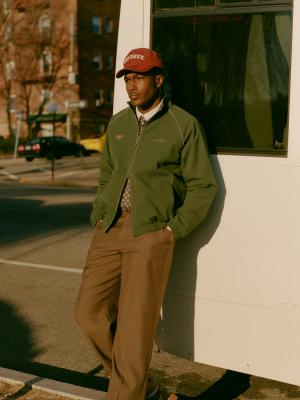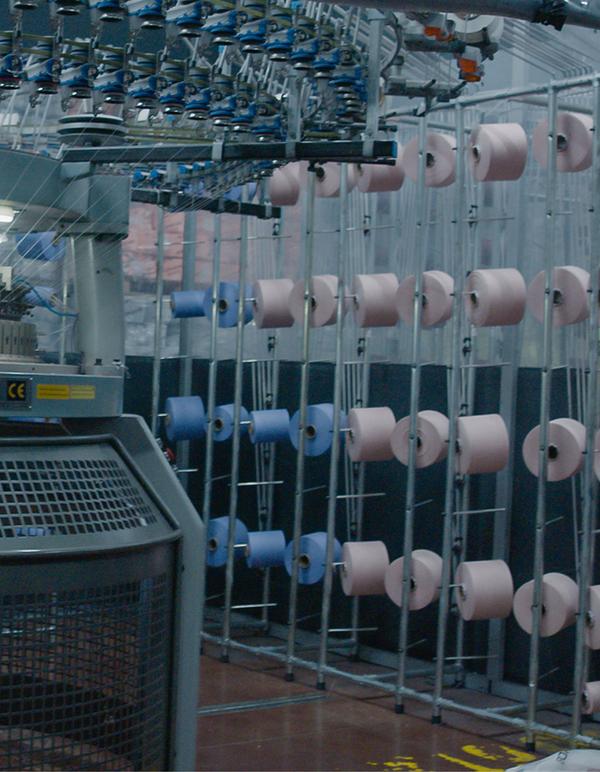Materials
The materials we use in our garments and packaging can make one of the biggest differences to how big the environmental impact the finished product has.
Preferred Materials
- In our design process, we workwith aPreferred Materials List, which sets out which fibers we always aim to use, and which fibers we do not use.
- Our preferred materials list is based on Textile Exchange recommendations.
- To support our focus on craftsmanship, we try to use heritage materials and fabrics, and have previously used wool from Italy, bouclé and jacquard from France, and Harris Tweed® from Scotland.
- We’re working to reduce our use of virgin materials and increase our use of mono, recycled, and organic materials.
- As of the AW24 collection, we no longer use down in our products.
Packaging
- We’re continuously optimizing the use of packaging in our products by reducingthe amount of packaging we use and improving qualities
- We request recycled plastic to make our poly bags, which means the plastic has had a previous life and been repurposed. The bags are also recyclable after use.
- Our folding guide allows us to reduce the amount of plastic we use. For example, we fold our T-shirts so they fit in smaller bags.
- In our physical stores, we only offer customers the option of a paper bag.
- Our shipping boxes and bags are designed to match the size of our products, meaning we’re able to use less packaging.
- We request shipping bags and boxes that are made with more responsible materials, like Forest Stewardship Council (FSC) recycled cardboard.
- We source our hang tags, logo labels, and care labels from a single supplier, which gives us transparency around origin and content.
Memberships & Certifications
To further our goal of becoming more responsible we’re members of two organizations whowork towards improving best practices in the textile and fashion industry.
Better Cotton
We are proud members of Better Cotton, who represent a natural step in our pursuit of a more responsible future.
Through Better Cotton and its Partners, farmers receive training on how to use water efficiently, care for the health of the soil and natural habitats, reduce the use of the most harmful chemicals, and apply decent work principles.
Though Better Cotton itself is not physically traceable regarding the end product, Better Cotton farmers benefit from the demand for Better Cotton in the same volumes as those sourced.
An essential factor in Better Cotton is the improvements in the socio-cultural situation, as they strive for a fairer wage for their farmers, allowing them to better provide for their families. As such, the organization not only focuses on environmental and economic responsibility but also on social responsibility for farmers.
We’re committed to sourcing 70% of our cotton as more sustainable cotton by 2025. More sustainable cotton includes Better Cotton, organic, and recycled cotton.
For more information about Better Cotton, visit bettercotton.org/learnmore.
Leather Working Group
We make our garments and accessories with leather from tanneries certified by Leather Working Group, or LWG.
LWG is a not-for-profit organization that aims to reduce the environmental impact of leather production around the world while promoting best practices and gradually evolving the industry.
They audit tanneries around several different responsibility and social criteria, which means that tanneries need to monitor and achieve set goals for their air and noise emissions and water use to get certified. There’s also a grading system around how much renewable energy they use, the traceability of raw materials, and the chemicals they use.
The LWG auditing process also assesses whether tanneries are complying with health and safety procedures, to reduce the risk of workers getting injured.
To learn more about Leather Working Group and their mission, visit leatherworkinggroup.com/our-impact/





